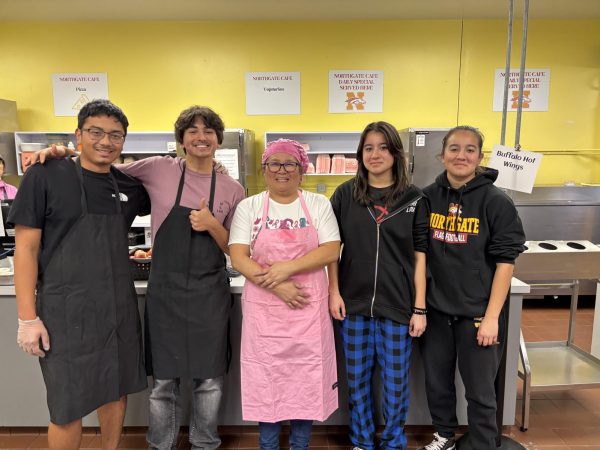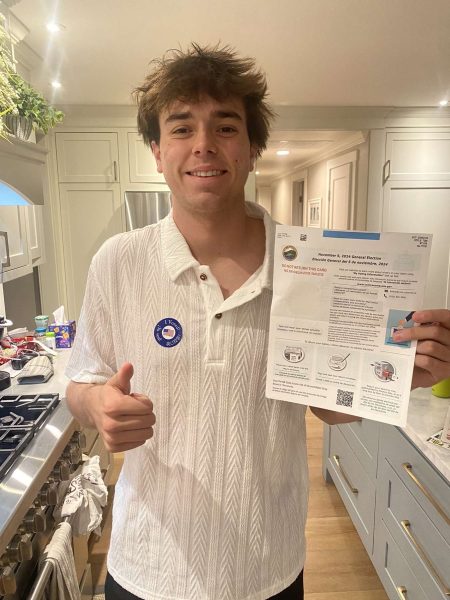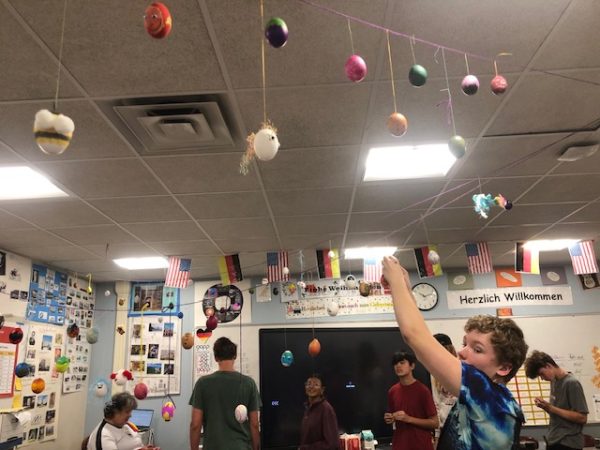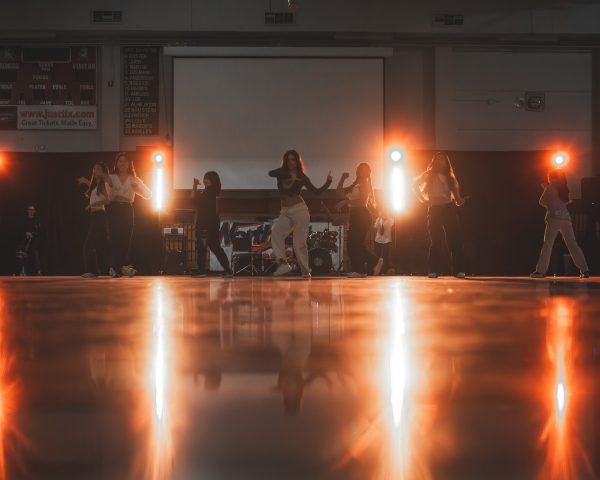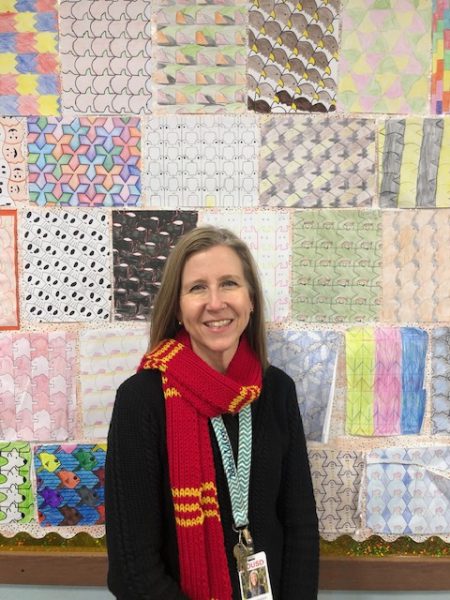Finally, finals!
Spring finals take place during the week of May 24 for seniors, on Friday May 28 for those with A-period classes, and on June 1 and 2 for freshmen, sophomores and juniors.
Tick. Tick.
Clocks count down the seconds for students to finish their work for this year. Students bury their heads in books as teachers hand out some of the final assignments or projects for the school year. It seems as though this year has flown by for many at Northgate.
As this year comes to a close, students and teachers give some of their thoughts about finals to help students prepare. But first, just when are finals?
Most finals for seniors will take place the week of May 24, including three days of English class Senior Project presentations. With morning classes only, Wednesday is a school day for periods 1,3 and 5 and Friday becomes a Homeroom bell schedule day. Students with an A-period class will have a Friday May 28. Senior graduation is Sunday May 30. Monday is a holiday and freshmen, sophomores and juniors will have three final periods per day June 1 and 2.
Many teachers say the finals format has changed significantly this year. The online system has made many resources more accessible during tests, begging the question: can you actually give students tests while online? To prevent cheating, many teachers were forced to make multiple changes to their end-of-the-year assessments.
Lauren Lahey, who teaches psychology and World History, explains: “In previous years, my finals have been multiple choice finals in the classroom with about two hours to complete it. Finals usually vary around 100 multiple choice questions.”
This is a very typical high school final, say teachers. But, because of the transition to Zoom, she has switched to an essay-like assignment to judge student comprehension. “I’ve switched gears to assessing my students a couple of different ways,” Lahey said. “I’ve done a lot of written assessments, looking for in-depth responses that are thorough and make sense. Ultimately, I look for evidence that the student was paying attention and taking notes.”
Many students, it seems, prefer this more laid-back approach to exams, including senior Daniel Shuster. “I like the more informal, unstructured approach because it makes me less tense and nervous for finals,” he said. Shuster found that the distance-learning finals also helped shift his mentality from having to get a specific grade to simply try to do his best.
Another teacher who changed many of his assessments is Paul Gundelfinger. “When I teach in person, I give a full-on final with over a hundred multiple-choice questions because I’m able to monitor the test,” he said.
Gundelfinger explained how the screen separation between students and teachers makes it difficult not just to prevent cheating, but also to just teach. “I almost don’t believe in [giving tests online] because I’m not in the room and I can’t monitor the test. I just make my tests open-notes. Even though I call it a test, I almost don’t even think of it a test,” he said.
Instead, Gundelfinger has resorted to assessing written assessments, similar to Lahey. “I actually feel like some of my written assessments have been more informative than the test in terms of seeing what a student can do. If you have to write something, then I feel good about that student actually showing what they learned.”
Junior Jasmine Kohlmeyer is another student who was thankful for the distanced finals. “None of my classes really had long tests with hundreds of questions like I am used to. They were more fun and definitely a lot shorter. For me, this was a good thing because it was a lot less stress and I didn’t really have to study a lot. The grades were definitely easier as well,” she said.
Jill Casillas, a Spanish teacher, is another who reflected on the changes she had to make to try and keep students as interested as possible. “I gave students a variety of assignments to address many learning styles and hopefully spark interest,” Casillas said. “I have given multiple choice quizzes, short response quizzes, and ‘fill-in’ responses, but… also assigned small projects where students have created slideshows and Flipgrids.”
Though the assignments were significantly different this year, that doesn’t mean that students are completely off the hook. Kohlmeyer and Shuster offer some of their favorite study tips as we enter the last phase of finals for this year.
“Khan Academy has super engaging videos, full of charts and diagrams, and the lessons are presented in a way that anyone can understand,” Schuster said.
“In-person I studied a lot more off of written things or flashcards or things like that but online it’s more like Quizlets or typed documents. My favorite studying technique is 100% Quizlet. I love that they have already made study kits so you don’t have to take all the time to make your own. You can also find flashcards for really any subject,” Kohlmeyer explained.
Both upper grade level students enforced the idea to not stress too much about the finals. Shuster remarked, “Don’t over-study and really focus on what you don’t know. Focus your energy on concepts or definitions that you don’t get, and don’t spend your time on topics you know like the back of your hand–you only have so much energy, so be kind to yourself. After all of that, don’t over-study, because you know the concepts, they’re all in your head somewhere!”
Kohlmeyer echoed that idea. “Don’t stress too much when you are studying: you already learned the material and just need to keep calm and confident. Some studying is good of material teachers tell you to study but don’t overdo it and look back at every single small detail of everything,” she said.
Despite the disagreement about whether online finals are good or bad between students and teachers, both can agree that distanced learning has introduced many new strategies for learning.
Kohlmeyer explained how she prefers online finals because of the innovative projects her teachers had to come up with. “I prefer online finals because they offer more options such as escape rooms, which I was able to do for one of my classes, or group projects instead of sitting and having to read a ton of things and be on a time crunch.”
She also explains her predictions for the future. “I predict that finals could change because teachers are discovering more resources and opportunities of not just following a traditional sit-down and read type of test,” she said. “They could be more group-based, fewer questions or even online.” Some of these different resources could keep students more engaged, resulting in a more effective learning system overall.
Gundelfinger agrees that he has discovered a lot of new learning tools he hopes to use for the future. “There are so many more online tools,” he said. “I could see myself giving a test online but in the classroom so that I’m there to watch students and monitor that they aren’t looking stuff up. But some of the tools that teachers have been learning for remote learning are really valuable tools that can be used in the classroom.”
One example of something he hopes to use is a website called Parlay. “I can see myself using something like Parlay, where there is an anonymous discussion page. But the teacher has access and can see all the responses. Remote learning has definitely taught me some things that I’m hoping to use in the classroom,” Gundelfinger explained.
Most people, students and teachers alike, miss the connection that in-person learning provides. Casillas explained, “Having to stay home and greet my classes on the computer screen has been excruciating, but I have made the best of it most days. I wish I could at least see everybody’s face on the cameras, but 95% of students keep their cameras off or pointing at their ceilings so it is close to impossible to engage and connect with them.”
Gundelfinger agrees. “It’s been very challenging [teaching online]. A teacher feeds off the energy of the room. I don’t feel like the chat is a very accurate way of checking for understanding. I can see if a student has his head on the desk or isn’t getting it. I miss that feedback because it gives me energy. It’s part of the satisfaction of my job.”
“It’s been an interesting ride,” Lahey said. “I think for me one of the more challenging parts is having students that I’ve had all year and I don’t know what they look like or sound like. That is definitely something that is a whole new realm for me and definitely makes it more challenging to connect with students.”
In these past few months, many students have gotten the opportunity to walk around Northgate’s campus and get to know at least one of their teachers through the in-person learning cohorts. In addition to this, vaccines are beginning to become available to everyone over the age of 11. With this in mind, there is hope that by next fall, students will be able to get back to a more normal schedule.
“I’m excited for everyone, but especially our freshman class this year, to actually be back on campus and experience walking through the halls, passing periods, and going to games and rallies: those things that are really the high school experience,” Lahey added.
Casillas looks forward to being back in school as well. “I’ve learned that being in the classroom with my students gives me lots of energy and I look forward to coming to work every day and interacting with my students,” she said. “Those few students who have been active in class this year have made me feel better about the work I do and the planning I put into my lessons to hopefully make them useful for distance learning.”


